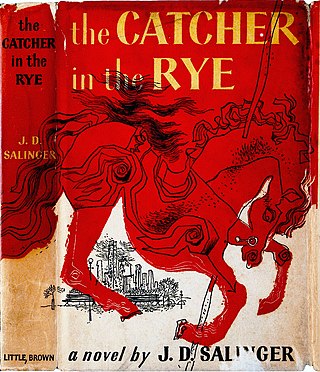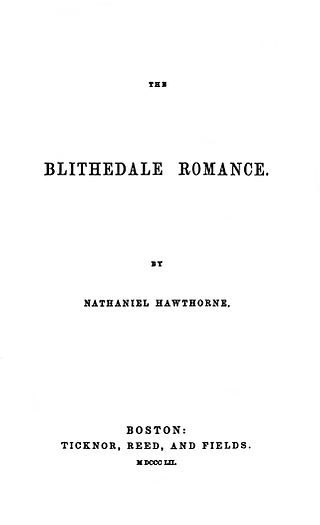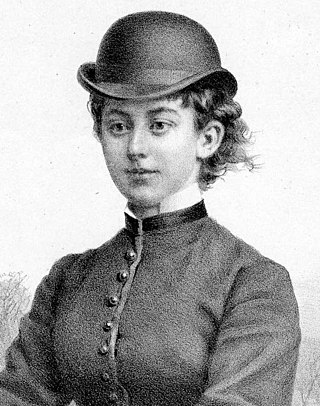Plot summary
The novel begins with the telling of Humphrey Place saying "No" at the altar where he was due to marry Dixie Morse. Humphrey's immoral behaviour is assumed to be a result of his recent association with Dougal Douglas, a Scottish migrant who has since left the area of Peckham.
Spark goes on to tell us the entire story of what exactly happened during Dougal's residence in Peckham. From his inaugural meeting with Mr V. R. Druce, head of nylon textiles manufacturers Meadows, Meade & Grindley, we learn that Dougal is employed to bridge the gap between industry and the arts. He befriends employees Merle Coverdale (who is in fact indulging in an unromantic, immoral affair with the married Mr Druce) and Elaine Kent, an "experienced controller of process", as well as Humphrey Place, a refrigerator engineer.
After finding lodgings with Miss Belle Frierne (where Humphrey Place also resides), and splitting up with his fiancé Jinny due to her being ill (his "fatal flaw" is that he cannot bear anyone who is ill), Dougal embarks upon a mission of disruption throughout Peckham. Throughout this he falls foul of typist Dixie Morse and electrician Trevor Lomas and becomes the target of a gang consisting of Trevor, Collie Gould and Leslie Crewe.
Throughout his stay in Peckham, Dougal carries out "human research" on the "moral character" of the people of the area. As well as working for Meadows, Meade & Grindley, he also works for their rivals, the more prosperous Drover Willis's textile manufacturers (under the pseudonym Douglas Dougal), as well as working as a ghost writer for the retired actress and singer Maria Cheeseman. Only Nelly Mahone recognises Dougal for the manipulative "double-tongued" rogue he is, but no one listens to her as everyone views her as a drunken Irish vagrant.
The culmination of Dougal's antics results in his landlady Miss Frierne having a stroke, Mr Druce killing his mistress Merle Coverdale by stabbing her in the neck with a corkscrew, and the rejection of marriage to Dixie Morse at the altar by Humphrey Place. In the penultimate chapter Dougal attacks Trevor and, despite injury, Dougal manages to leave Peckham. The novel ends with the marriage of Humphrey Place and Dixie Morse, two months after the original, aborted wedding. The final scene shows Peckham in a state of transcendence, not shown anywhere else in the novel, and is seen as a transfiguration of the commonplace world.

Humphrey DeForest Bogart, colloquially nicknamed Bogie, was an American actor. His performances in classic Hollywood cinema films made him an American cultural icon. In 1999, the American Film Institute selected Bogart as the greatest male star of classic American cinema.

Sir Thomas de Ercildoun, better remembered as Thomas the Rhymer, also known as Thomas Learmont or True Thomas, was a Scottish laird and reputed prophet from Earlston in the Borders. Thomas' gift of prophecy is linked to his poetic ability.

TamLin is a character in a legendary ballad originating from the Scottish Borders. It is also associated with a reel of the same name, also known as the Glasgow Reel. The story revolves around the rescue of Tam Lin by his true love from the Queen of the Fairies. The motif of winning a person by holding him through all forms of transformation is found throughout Europe in folktales.

Peckham is a district in south-east London, within the London Borough of Southwark. It is 3.5 miles (5.6 km) south-east of Charing Cross. At the 2001 Census the Peckham ward had a population of 14,720.

The Catcher in the Rye is a novel by American author J. D. Salinger that was partially published in serial form 1945–46 before being novelized in 1951. Originally intended for adults, it is often read by adolescents for its themes of angst and alienation, and as a critique of superficiality in society. The novel also deals with themes of innocence, identity, belonging, loss, connection, sex, and depression. The main character, Holden Caulfield, has become an icon for teenage rebellion. Caulfield, nearly of age, gives his opinion on a wide variety of topics as he narrates his recent life events.

Dame Muriel Sarah Spark was a Scottish novelist, short story writer, poet and essayist.
A hobgoblin is a household spirit, appearing in English folklore, once considered helpful, but which since the spread of Christianity has often been considered mischievous. Shakespeare identifies the character of Puck in his A Midsummer Night's Dream as a hobgoblin.

The Blithedale Romance is a novel by American author Nathaniel Hawthorne published in 1852. It is the third major "romance", as he called the form. Its setting is a utopian farming commune based on Brook Farm, of which Hawthorne was a founding member and where he lived in 1841. The novel dramatizes the conflict between the commune's ideals and the members' private desires and romantic rivalries.

Thomas Percy was Bishop of Dromore, County Down, Ireland. Before being made bishop, he was chaplain to George III of the United Kingdom. Percy's greatest contribution is considered to be his Reliques of Ancient English Poetry (1765), the first of the great ballad collections, which was the one work most responsible for the ballad revival in English poetry that was a significant part of the Romantic movement.
"Lamkin" or "Lambkin" is an English-language ballad. It gives an account of the murder of a woman and her infant son by a man, in some versions, a disgruntled mason, in others, a devil, bogeyman or a motiveless villain. Versions of the ballad are found in Scotland, England and the US.
"The Elfin Knight" is a traditional Scottish folk ballad of which there are many versions, all dealing with supernatural occurrences, and the commission to perform impossible tasks. The ballad has been collected in different parts of England, Scotland, Ireland, the US, and Canada. As is the case with most traditional folk songs, there have been countless completely different versions recorded of the same ballad. The first broadside version was printed before 1674, and the roots of the song may be considerably older.

Outlander is a historical fantasy novel by American writer Diana Gabaldon, first published in 1991. Initially set around the time of the Second World War, it focuses on nurse Claire Beauchamp, who travels through time to 18th-century Scotland, where she finds adventure and romance with the dashing Jamie Fraser. It is the first novel in the Outlander series, which is set to comprise ten books, nine of which have already been published. The television adaptation of the series premiered on Starz in the US on August 9, 2014.

Boyd is an ancient Scottish surname.
The False Knight Upon the Road is a British ballad, collected and published as Child ballad 3, Roud 20. It features a riddling exchange between a schoolboy and a "false knight," the devil in disguise. As to its provenance, it is presumed to not be much older than its first publication in 1824.

Robert Golden Armstrong Jr. was an American character actor and playwright. A veteran performer who appeared in dozens of Westerns during his 40-year career, he may be best remembered for his work with director Sam Peckinpah.

Lady Florence Caroline Dixie was a Scottish writer, war correspondent, and feminist. Her account of travelling Across Patagonia, her children's books The Young Castaways and Aniwee; or, The Warrior Queen, and her feminist utopia Gloriana; or, The Revolution of 1900 all deal with feminist themes related to girls, women, and their positions in society.

Huntingtower is a 1922 novel by the Scottish author John Buchan, initially serialised in Popular Magazine between August and September 1921. It is the first of his three Dickson McCunn books, the action taking place in the district of Carrick in Galloway, Scotland.
"Comin' Thro' the Rye" is a poem written in 1782 by Robert Burns (1759–1796). The words are put to the melody of the Scottish Minstrel "Common' Frae The Town". This is a variant of the tune to which "Auld Lang Syne" is usually sung—the melodic shape is almost identical, the difference lying in the tempo and rhythm.
Thomas Boyd, 6th Lord Boyd (c. 1547–1611) was a Scottish noble and politician.

The novel in Scotland includes all long prose fiction published in Scotland and by Scottish authors since the development of the literary format in the eighteenth century. The novel was soon a major element of Scottish literary and critical life. Tobias Smollett's picaresque novels, such as The Adventures of Roderick Random and The Adventures of Peregrine Pickle mean that he is often seen as Scotland's first novelist. Other Scots who contributed to the development of the novel in the eighteenth century include Henry Mackenzie and John Moore.













